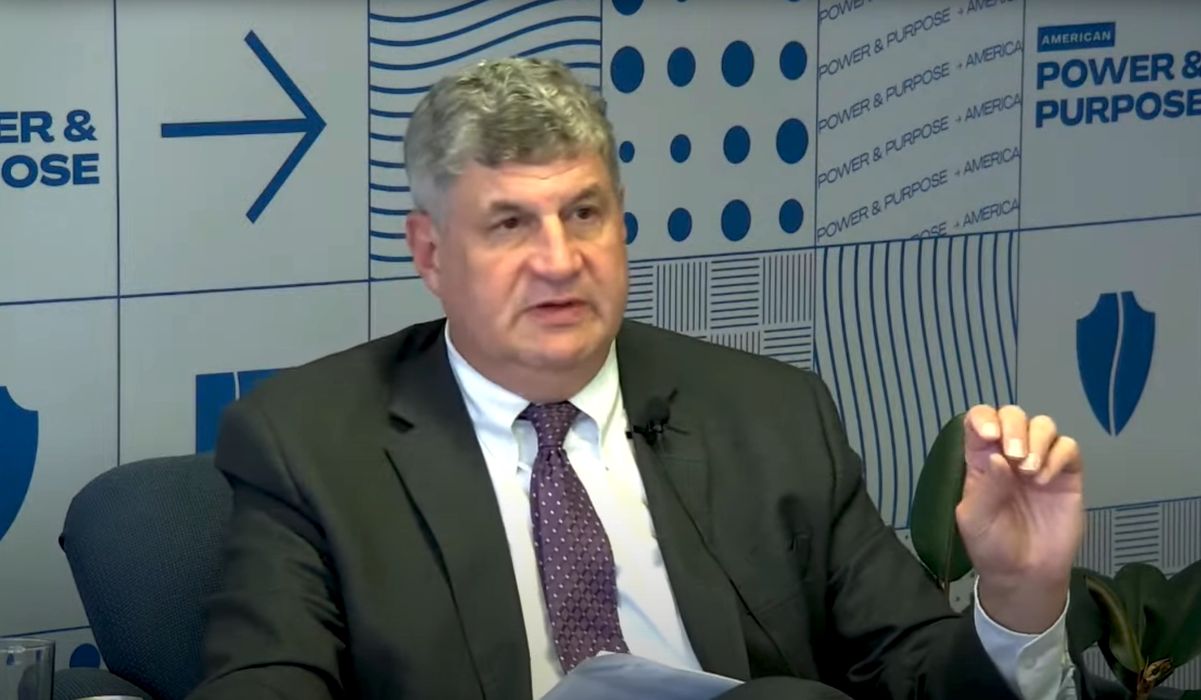
The US has revealed it has provided Ukraine with some type of industrial 3D printers, but what does this mean?
The US has been the prime supporter of Ukraine for their flight against the invading Russian military that has occupied major portions of their country. The US has been supplying a series of equipment and weapons, and no doubt intelligence.
But in an admission during a talk at the Center for a New American Society, Under Secretary of Defense for Acquisition and Sustainment, Dr. William LaPlante, revealed there was a development last month regarding 3D printing. The one-hour video discusses many interesting aspects of the logistics for supporting Ukraine, but the 3D print mention occurs at the 34 minute mark.
In the video, the Under Secretary explained:
“Last month we got them these industrial size 3D printers into the country and last week we trained them on it … [holding a sheet we can’t see] It shows an industrial size 3D printer — I mean we’re talking like a truck size that the Ukrainians have finished training on. It’s going right in theater and they’re printing all their repair parts. It’s just remarkable what they’re doing and it’s changing the ball game.
We’re talking like the size of the Ukrainians they’re standing out there; it’s twice the size of height, and it’s it’s the size of a U-Haul. It’s pretty cool what’s going on, and of course you can do things in 3D printing, not just with speed but you can actually make parts that you might not even make yeah no that 3D printing is amazing that that is spectacular that they’re finding ways to be able to sustain many of the weapons that they’ve got and probably build new ones.”
That last bit is well-known to 3D printing enthusiasts, but might be a surprise to outsiders.
LaPlante also indicated that the Ukrainians had been 3D printing spare parts, likely in plastic, right from the start. Evidently they had been ignoring licensing issues, as it was an emergency situation. However, LaPlante said “we’ve cleaned that up”. I’m not sure what that means, but it could be that they’ve somehow provided the Ukrainians with legit 3D models for the parts they need.
What can we make of all this?
First, the recognition of the utility of using 3D printers has reached new heights: by using the devices in this manner, it’s now proven that in critical situations one can resort to the technology for emergency spare parts. This bypasses all kinds of warehousing and production issues and basically makes the required parts on demand.
Second, this legitimizes the digital inventory concept for military use. While this seems to be a “fit some pieces together” solution, it’s highly likely the concept will be refined for future wars and become a standard approach. If you think about it, wars are usually a battle of resources and logistics. But what could be better than a squadron of 3D printers creating an endless and dynamic stream of the materiel needed for the front?
Third, “somebody’s” 3D printing system has literally gone to war. We don’t actually know which machine(s) were transferred to Ukraine, as officials haven’t mentioned it in any material I’ve seen.
This is not surprising, as giving away the technical information could compromise operational security: if an enemy knew you could do this, but not that, with the equipment, they may gain an advantage.
Not knowing which equipment is used leaves us to the speculative realm.
Which machine could it be? We know that it is an “industrial” machine, it prints metal, is as big as a “U-haul”, and is “in the theater”.

To me this points to a specific machine: this is most likely a SPEE3D XSPEED module, which has been extensively tested by multiple western militaries. The company has even built a kind of “drop in” 3D print factory-in-a-shipping-container system, specifically designed for military use. I would not be surprised if the XSPEED is the type of device being supplied to Ukraine.
The machine uses a unique supersonic process to very rapidly build metal objects from powder. The process is capable of using a wide variety of materials, even copper, which is extremely difficult to 3D print on most other systems.
One unique property of SPEED3D’s process is that it is relatively immune to poor environmental conditions, unlike LPBF systems that require sophisticated factory settings with complex air handling.
My suspicion is that the US has provided Ukraine with some number of these factory pods for the rapid production of metal spare parts.
The result is the Ukraine will be able to produce spare parts at lightning speed as compared to the old-style mass manufacturing factory approach used by their opponent.
